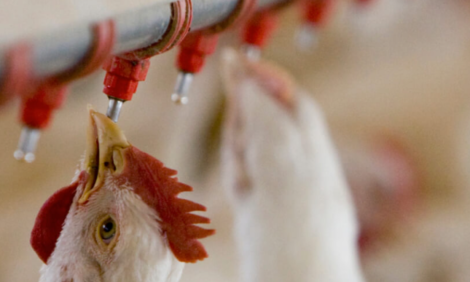



Germany Aims for Chicken Sexing in the Egg by 2016
GERMANY - On a recent visit to the University of Leipzig to review the latest research there, the agriculture minister has called for a practical method to determine the sex of chicken embryos in order to bring to an end the culling of male layer chicks by the end of 2016.Federal food and agriculture minister, Christian Schmidt, last week saw for himself the research results to phase out the killing of male chicks during a visit at the University of Leipzig.

He said he was impressed by the progress in the project, which is funded by his ministry (BmEL), and announced additional funds and resources to put the results of the research into practice and enter the market.
After meeting the research groups at the University of Leipzig and Dresden and visiting the laboratory to the Clinic for Birds and Reptiles at the University of Leipzig, Mr Schmidt said that, by the end of 2016, there should be prototypes of a device that determines the sex of chicken embryos at just three days of incubation and then sorts the eggs automatically by gender.
He added that, when such a device is available on the market, there will be no need for the nation's hatcheries to kill male chicks, a practice that will soon belong in the past.
The research to end this procedure is a central part of the Ministry's animal welfare initiative 'A Question of Attitude - New ways for better animal welfare', which has already cost more than €2 million.
Minister Schmidt stressed his support of the project, saying find it intolerable from both animal protection as well as from an ethical points of view that each year about 45 million male chicks are killed just because they are the wrong sex.
A ban on the practice in Germany alone, however, would only shift the chick killing abroad, which would not help the animals.
He added: "I want us to be a pioneer for better animal welfare in egg production in Europe.
"As you saw today, we are making good progress. My goal is that this chick culling ends by 2017 but the sector must also play its part."
In-ovo Sex Determination
The joint research project for spectroscopic sex determination in the egg at the universities of Leipzig and Dresden is now well underway.
Project co-ordinator, Professor Maria Kraulwald-Junghanns, explained: "The aim of the project was to explore alternatives to the killing of male chicks of layer lines, so that the hatching and therefore the killing of male chicks is prevented from the outset.
"The most difficult stage was to identify a suitable method but we have now achieved that."
Professor Kraulwald-Junghanns has recently been honoured for her commitment to animal welfare by receiving the Felix Wankel Animal Protection Research Award.
The method for sex determination in the egg uses near-infrared Raman spectroscopy (NIR), which has the advantage of being able to test fertilised embryonated chicken eggs after about 72 hours, she explained.
The next steps are to optimise and then automate the NIR method, as well as to ensure that the female embryos are not harmed by the process.
After that, commercial enterprises will need to invest in the development of standard devices and use them.
Method of Sex Determination Three Days after Incubation
The new spectroscopic sex determination method makes use of the different size of the sex chromosomes of male and female chickens advantage.
After three days of incubation, the embryos develop small blood vessels, which can be used to distinguish male and female embryos.
Firstly, a laser is used to make a microscopic hole in the shell of each egg. Then Raman spectroscopy - in the near infrared wavelength range - is used to send light into the egg contents. Analysis of the light scatter pattern from the blood cells of the embryo can identify the embryo as male or female.
The hole in the shell is then sealed again. The female embryos can be incubated as normal, while the "male" eggs can be used in a number of industrial processes, including animal feed and the chemical industry.
Among the advantages of the method is that it is contactless, thus eliminating the need to clean and disinfection or replace any parts between measurements and keeping running costs low.
Sexing currently takes about 15 to 20 seconds per egg but improvements could realistically be made to reduce it to less than 10 seconds.
The top image shows a laser making a small hole in each egg. Source of both images: Gottschalk/photothek/BMEL








